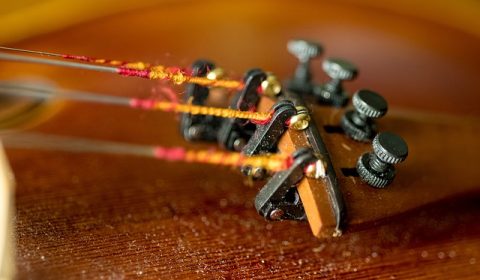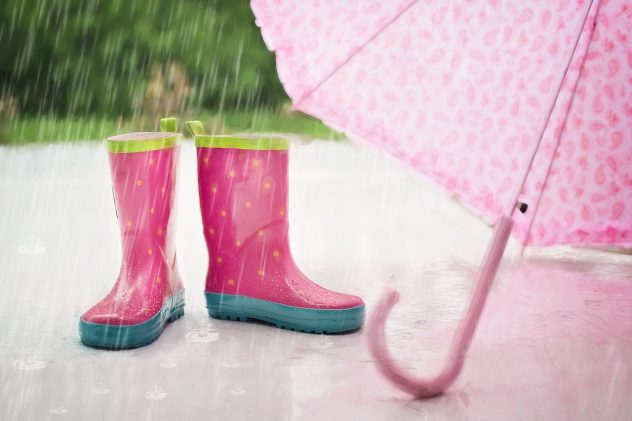
It’s one thing to learn how to play the violin. You go to lessons then go home and practice. Unfortunately, some teachers don’t teach how to care for your violin. Like any other tool you own, the violin needs regular care (I was going to name this post ‘The Care and Feeding of Your Violin’). It needs to be cleaned, strings need to be changed, and bows need rosin and re-hairing. Below are five easy tips for better violin care. Essential information for anyone who plays a stringed instrument.
 1 – Keep it Clean
1 – Keep it Clean
Every string player should have a cleaning cloth in his or her case. You should wipe down the top of the violin after every rehearsal or practice session, maybe even more than once. Rosin dust will harden over time, forming a sticky coating under the strings and at the end of the fingerboard. That can affect the sound of your instrument. If you always wipe rosin dust away before you close your case, this won’t happen.
My personal favorite is a micro-fiber cloth similar to the one that comes with a computer monitor or new TV. It’s a little larger than the ones that clean glasses. You can buy one specifically for violins and other stringed instruments, but they are more expensive. Any large micro-fiber cloth will do.
A simple wipe down (including the fingerboard under the strings) of the top of the violin takes less than 10 seconds, but it will prolong the life of your instrument for sure. Also, never use any household polishes or cleaners on your violin. If you must polish your instrument (usually not necessary), make sure you use polish specifically for stringed instruments.
2 – The Weather
Stringed instruments are very sensitive to the weather. Not hot and cold as much as humidity. Humidity is the real killer of stringed instruments. If it’s very humid (like summers in Atlanta where I live and work), pegs will stick, seams will stretch, and sweat will eat away varnish. When humidity goes way down in the winter, those seams will explode and pegs won’t stick at all. Even worse, if you go from A/C to humidity and back during the summer, your poor violin gets pushed and pulled to oblivion. This is why many players buy a spare violin for outside play.
A stringed instrument must be stored in a controlled environment. That means, not to hot, not too cold, and very little humidity. A/C in the summer is highly recommended. In the winter, the same rules apply. Always keep your instrument in a room with a normal temperature (68-80 degrees), and with normal humidity (less than 30%).
 Never leave a violin in a car even if it’s in the trunk. During the summer, the varnish can melt when the temperature gets above 100 which only takes about 15 minutes in the summer. Same goes for the winter. The cold and lack of humidity will cause any weak seams to open. Also, never get your instrument wet. Water and violins do not mix so make sure you wipe sweat or any water off immediately.
Never leave a violin in a car even if it’s in the trunk. During the summer, the varnish can melt when the temperature gets above 100 which only takes about 15 minutes in the summer. Same goes for the winter. The cold and lack of humidity will cause any weak seams to open. Also, never get your instrument wet. Water and violins do not mix so make sure you wipe sweat or any water off immediately.
3 – Changing Strings
Violin care includes changing strings, hopefully before one breaks. Obviously it’s time to change a string when it breaks, but you also have to be on the lookout for worn strings that might break soon. On average, violin strings are good for about 100-150 hours of use before they go bad or false. You’ll know when a string is false by how it sounds and how it plays. E-strings are easy – they squeak a lot when they go bad. The others will develop what’s called a wolf or wolf-tone which is an ugly sound when you try to play certain pitches.
 Another thing you can do to find worn strings that need changing is to run your finger up and down the string. If you feel any imperfection or rough spot, it might be time to get a new string on there. Sometimes strings will begin to unravel (like your teacher if you don’t practice). If you notice that, change the string immediately because it will break soon.
Another thing you can do to find worn strings that need changing is to run your finger up and down the string. If you feel any imperfection or rough spot, it might be time to get a new string on there. Sometimes strings will begin to unravel (like your teacher if you don’t practice). If you notice that, change the string immediately because it will break soon.
Putting a new string on isn’t that difficult but you should always be careful. Make sure the ball end is secure in the tailpiece and try to keep the string held tight so it winds correctly. Once you learn how to do it, it’s actually pretty easy.
4 – The Care and Feeding of Your Bow
Do not touch the hair. That’s a pretty big no-no. Oil from your fingers can get on the hair making it slippery. When that happens, rosin won’t even help. Look at the hair closest to the frog. If you have a good right hand position, the knuckle of your thumb probably touches the bow hair. That’s why the hair down there is dark brown and shiny. Most professional musicians have their bows rehaired at least twice per year or more. Students should have their bows rehaired once per year or so. It costs about $50 and is essential for tone quality.
 Rosin your bow every time you are about to play. A few long strokes on the rosin cake will do. Don’t scrub the rosin onto the bow because the friction creates heat which will slightly melt the rosin. No, you won’t set your bow on fire, but the result won’t help you play better that’s for sure. Also, never make a groove in the rosin cake. Rosin can last a very long time, but a deep groove in the middle will cut that time in half.
Rosin your bow every time you are about to play. A few long strokes on the rosin cake will do. Don’t scrub the rosin onto the bow because the friction creates heat which will slightly melt the rosin. No, you won’t set your bow on fire, but the result won’t help you play better that’s for sure. Also, never make a groove in the rosin cake. Rosin can last a very long time, but a deep groove in the middle will cut that time in half.
Always tighten your bow before you play and loosen it when you’re done. The second part of that procedure is the most important. You want to avoid storing your bow when it’s tight at all costs. Remember, good violin care means good bow care too!
5 – Small Engine Repair for the Violin
Accidents happen. Violins get dropped or knocked around. Obviously you want to avoid these accidents, but over time they are unavoidable. Here are a few minor disasters that you might encounter, and what to do about them:
- Bridge falls over – Loosen the strings a little bit and put it back up. Check the inside of the violin first to make sure the sound-post didn’t fall over.
- Bridge is crooked or out of place – Slightly loosen strings and carefully move it back into place. Put the violin between your knees and use both hands.
- String breaks – see above
- Sound-post falls down – If you have a sound-post setter
, you can try and put it back up, but this is usually a problem for the local violin shop.
- Broken bow hair – Use nail clippers or small scissors to cut the hair close to the end. Do not pull the broken hair out or you might loosen the nut that holds all the hair in place.
If you encounter anything more serious than the above, talk to your teacher or take the violin to a local shop. Please don’t make things worse by trying to fix your violin. YouTube videos may make it seem easy, but it isn’t. Trust me.
Violin Care Made Easy
Being a good violinist starts with good violin care. If you keep your instrument happy, it will keep you happy. I have no actual evidence of this, but I swear that every time I clean my violin and have my bows reheaired, I suddenly play much better. When my violin is beautiful and shiny, so is my playing. Please take good care of your violin. Like scheduled maitanence on a car, keep your violin in good shape will save you tons of money down the road. Violin repairs are very expensive, but not if you don’t have to do them.


 1 – Keep it Clean
1 – Keep it Clean
